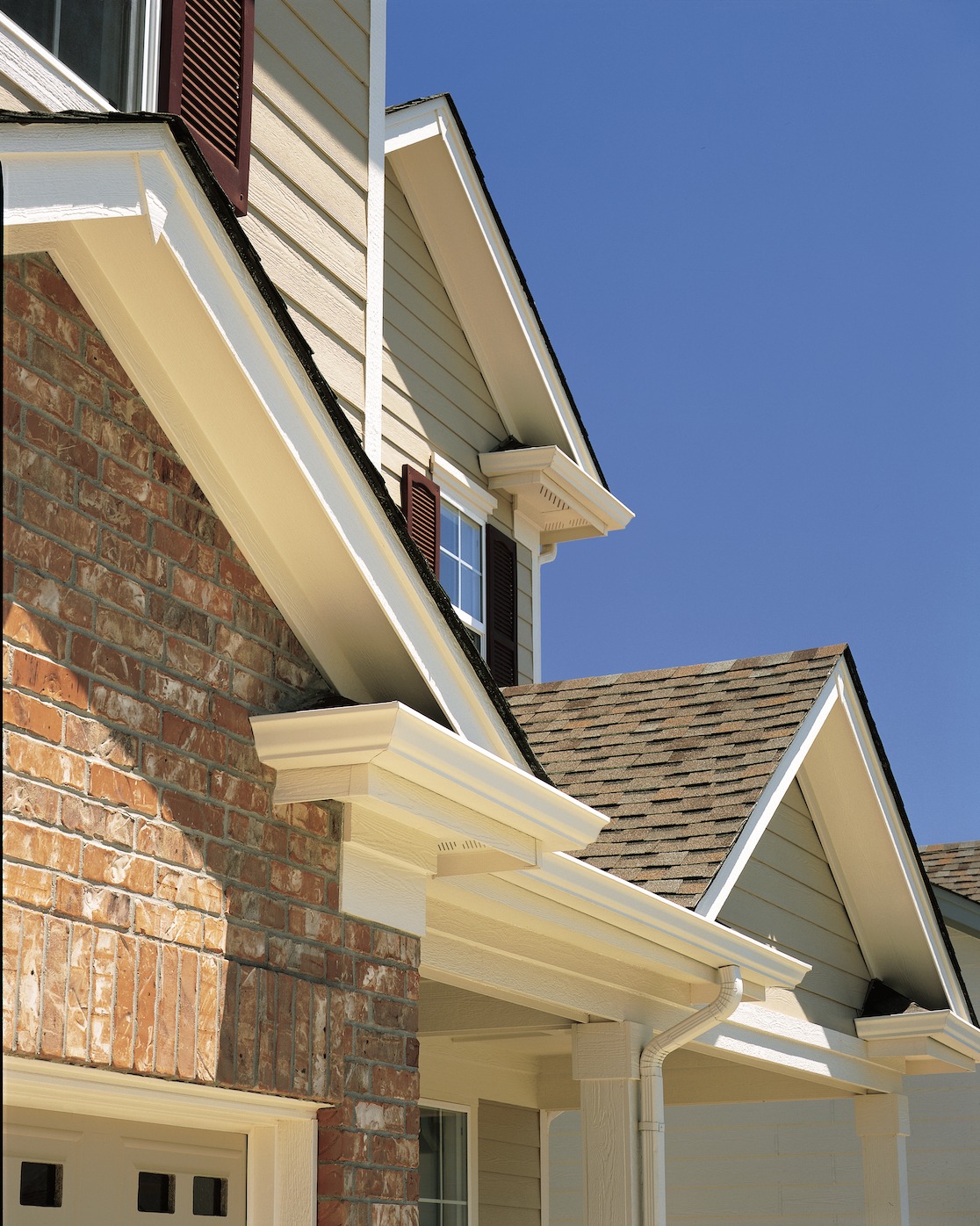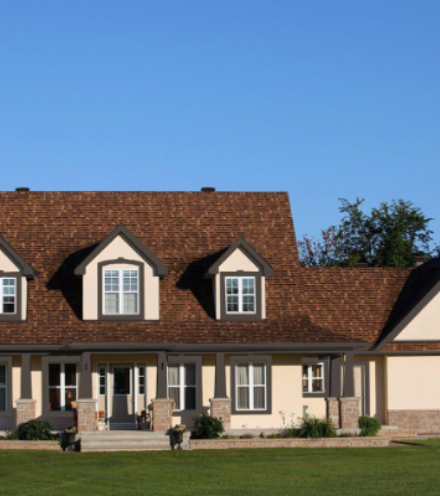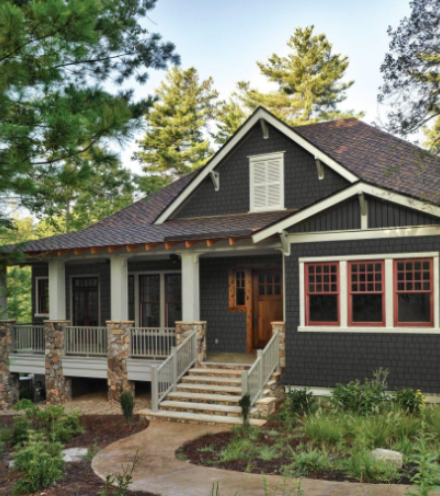Have any work done on the exterior of your home, from the roof to the siding, and you’re likely to run across the term, “soffit”. Soffits are integral to the rafters of your roof and serve several important functions ranging from aesthetics to helping keep your utility bills in check. If you’re having your home resided, you may want to consider investing in a new soffit to match.
What Is a Soffit?
Your roof by necessity, will often times extend over the walls of your home. This overhang can go by a few names, such as the house eaves or the rafters of your roof. The underside of this overhang, when given a finished appearance, is known as the soffit, which means “something fixed underneath”.

The soffit is basically, any finishing material, such as wood or fiber cement, that is installed to cover the underside of your roof overhang.
Why You Need One
The first and foremost reason to install a soffit on your home is for ventilation. Your soffit covers the underside of your roof, and therefore a portion of your attic space. Heat builds up inside of attics over time, both from the sun beating down on the house, and from the energy rising within.

If this heat isn’t given proper ventilation or air flow, it can cause your roof to become superheated. This, in turn, can lead to the shingles breaking down more quickly, and the formation of ice dams in the winter, which can cause water leaks. An overheated attic also leads to higher energy bills in the living areas as well. Ventilation is also important for helping to keep humidity levels in your attic down. Without proper ventilation through your soffit, humidity could build, causing problems such as mold, mildew, and wood rot.
Aesthetics are secondary, but important as well. Soffits provide a finished appearance for your exterior; without them, you would be looking at the rafters making up the underside of your roof’s overhang. Soffits come in a range of colors and materials, as well as a few styles, including smooth and wood-grain finishes. It’s common to invest in a soffit that matches or coordinates with the rest of your exterior appearance, to help give your home a cohesive and polished look.
Therefore, if you were installing fiber cement siding with a wood-grain finish on the rest of your home, you may want to consider a fiber cement soffit with a wood grain to match. Soffits can be any color, but many people opt for white or for a color that matches their trim for the best look.
The next reason why you want a soffit installed is more practical; soffits help protect the underside of your roof and roof deck from the elements. While your soffit can be made of any material and can be painted or finished to help protect that material, your roof deck is not. Soffits help keep damaging moisture and insect activity out of this crucial area, helping to prevent wood rot, mold, and other problems that can lead to failure of your roof over time.
Finally, soffits also help provide crucial ventilation to your attic and the area just below your roof deck. Attic ventilation is one of the key factors to helping keep your utility bills in check during hot weather, and to preventing issues such as mold growth and ice dam formation in the winter.
Soffits may be perforated or vented to help air circulate through your attic space. When air is allowed to circulate, it helps prevent the area from becoming super-heated. This means that your home will remain more comfortable in the hot summer months, allowing you to adjust the thermostat downward. In the winter months, keeping your attic cool helps prevent condensation that can result in mold growth, and helps prevent the snow on your roof from melting, running to the edge, and collecting where it can form an ice dam. Ice dams are one of the biggest causes of roof leaks, which in turn cause even more damage, so having a properly ventilated soffit can help protect your home from damage year-round.
Choosing Your Soffit Material
You have a lot of options for what material to use when installing a new soffit. While sometimes homeowners will wait and install a soffit that matches their siding, other times it may be beneficial to install a new soffit on its own, such as when you have a new roof put on, or if the old soffit becomes damaged in some way.
Because of how important this area is to your home’s appearance and function, the type of soffit you choose should be of equal importance. While wood and vinyl are two of the more commonly used materials, both have several drawbacks.

Wood requires frequent scraping and painting, as well as periodic replacement of rotting or warped panels. Vinyl can easily discolor in this area and may also warp in hot weather. In both cases, you may find that the soffit needs a lot more maintenance that you may desire.
Using a fiber cement soffit can help you keep the aesthetics of your home without the maintenance or other issues. Fiber cement soffits come in both smooth and wood grain finishes, vented and unvented, so you can choose which option works best for your home. They come in a wide range of colors as well, so you can easily coordinate with your siding and trim to get a cohesive look that will complete your curb appeal.
Invest in a Quality Soffit
The soffit may be a small part of your home’s exterior, but it’s also a very important part. Make sure that you treat this area with the care it deserves and invest in a quality fiber cement soffit to complete your exterior design.




